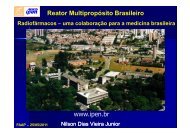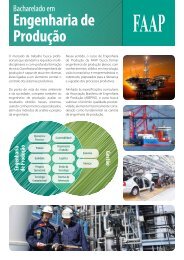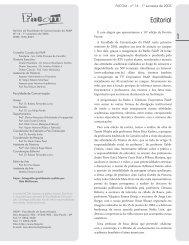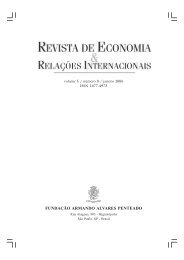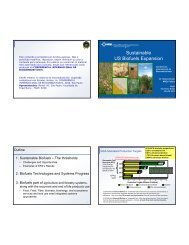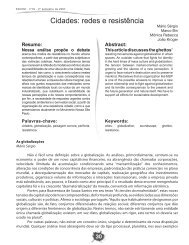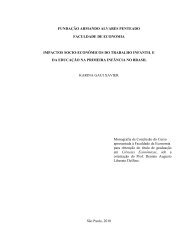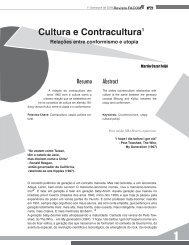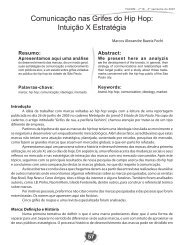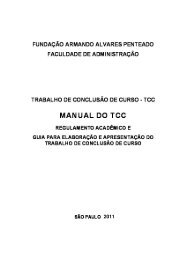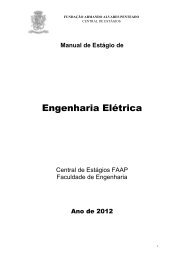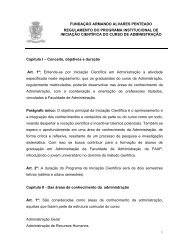Revista Estratégica vol.10 - Faap
Revista Estratégica vol.10 - Faap
Revista Estratégica vol.10 - Faap
Create successful ePaper yourself
Turn your PDF publications into a flip-book with our unique Google optimized e-Paper software.
The tanks were randomly populated with specimens of tambaqui (Colossoma macropomum)<br />
and pirarucu (Arapaima gigas). The tambaqui fingerlings had an average<br />
length of 5 cm and an average weight of 100 grams, while the fingerlings of pirarucu<br />
had an average length of 15 cm and an average weight of 300 grams. During the 12<br />
months of experiment, the animals were fed with commercial extruded type food. The<br />
amount of food provided was adjusted by means of biometry performed in 10% of<br />
the population of each tank. Maintenance, transparency, and adjustment of fertilization<br />
were performed using the Secchi disk to 35 cm.<br />
Every 30 days a Biometry was performed to monitor the development of the fish<br />
and to check the weight gain. The program of biometrics and food supply is shown in<br />
Appendix (Table 5).<br />
In relation to food, practically all organisms in the pond contribute with the feeding<br />
of the fish. The greater or lesser number of these organisms influences the production<br />
of fish increasing or decreasing the productive capacity respectively.<br />
Because it is a semi-intensive system, artificial food was administered periodically<br />
and the food used was extruded or floating types. After a year of settlement and with<br />
the weight of 2.0 kg for tambaqui and two years for pirarucu with 20 kg in average, the<br />
removal of the fish was performed with the usage of trawl net, with 25 mm mesh, wire<br />
multifilament nylon No. 18. The Table 1 sets out the costs of deployment for the recovery<br />
of 5.5 ha of degraded area by clay mining by Santa Maria Ceramics.<br />
In Table 2, it is represented the cost of producing a 12-month cycle for the Tambaqui<br />
species and 24 months for Pirarucu species in an area of 5.5 ha of clay extraction.<br />
Results achieved in production<br />
As Table 3 shows, it can be seen that the final biomass gain for the tambaqui species<br />
was 22,400 kg, and for the pirarucu species it was 24,600 kilograms on average. Regarding<br />
the mortality rate, it was 11% for tambaqui species and 18% for the pirarucu species,<br />
thus resulting in a survival of 89% and 82% for Tambaqui and Pirarucu respectively.<br />
32<br />
<strong>Estratégica</strong>, <strong>vol.10</strong>(02), dezembro.2010



